15 Spectacular Large Houseplants to Have in Your Home
 Fact-checked
Fact-checked
April 9, 2022
1. Giant Bird of Paradise
2. Norfolk Island Pine
3. Fishtail Palm
4. Monstera
5. Ming Aralia
6. Madagascar Dragon Tree
7. Yucca Plant
8. Kentia Palm
9. European Fan Palm
Key Takeaways
10. Ponytail Palm
11. Fiddle Leaf Fig
12. Corn Plant - Dracaena
13. Yucca (Adam’s Needle)
15. Rubber Plant
Conclusion
Large plants can transform a boring room into a lush, beautiful indoor garden. But, which plants are best for our home’s environment? Do taller plants need special care?
This article addresses all your queries about growing large houseplants. Continue reading for descriptions and tips on how to grow and maintain gorgeous flora in your home.
15 Large Houseplants for Your Home
Indoor plants are often credited with creating a sense of overall well-being and tranquility. So, if you’re looking for plants that will add a touch of color and beauty to your home, why not consider some of the following choices:
1. Giant Bird of Paradise
Botanical Name: Strelitzia nicolai
Description
Strelitzia Nicolai is a lush plant with glossy, green leaves. When cultivated inside, it grows up to 6 feet and taller over an estimated 20 years. The Giant Bird of Paradise is unlikely to produce flowers if grown indoors.
Maintenance
To care for your Bird of Paradise, position it in bright sunlight without it being too hot. Plant in well-draining soil and keep it moist during spring and summer. Do not overwater in winter. Apply a diluted, all-purpose liquid fertilizer to giant indoor plants during the hot months.
Check your Strelitzia regularly for spider mites or mealy bugs. If you find any, treat with warm soapy water applied with a soft cloth.
2. Norfolk Island Pine
Botanical Name: Araucaria heterophylla
Description
The Norfolk Island Pine is a conifer with evergreen leaves and cones. It has a vertical trunk with symmetrical branches and needle-like foliage.
Maintenance
When grown in an indoor environment, Araucaria heterophylla requires an ambient temperature of 50-59 °F and sufficient bright light to accommodate its growth; it can grow up to 3 to 5 feet.
Heterophylla loves humidity and requires regular watering. Fertilizing can be done every 2-3 weeks during the summer.
Make sure you provide enough space for the root system of these large potted plants as it has only one tap root for stabilization.
| DID YOU KNOW: Araucaria Heterophylla is also known as the Living Christmas Tree or the Monkey Puzzle Tree. |
3. Fishtail Palm
Botanical Name: Caryota mitis
Description
You can recognize the fishtail palm by its evergreen bipinnate leaves arranged in a herringbone pattern. It has clusters of cream or green flowers.
These fast-growing plants reach a height of 4-4.5 feet and require transplanting when roots start emerging from the drainage holes.
NOTE: The berries of Caryota mitis are potentially toxic when consumed or when they come in contact with the skin.
Maintenance
Caryota palms tolerate temperature fluctuations and adverse weather conditions. Place these common large houseplants in south-facing windows as they prefer bright sunlight or partial shade.
Water regularly or spritz to revitalize the leaves and provide humidity. Fertilizing monthly with an all-purpose fertilizer should keep your palm happy and thriving.
4. Monstera
Botanical Name: Monstera deliciosa
Description
Monstera is one of the best-known houseplants across the world. It is identifiable by the typical fenestrations (leaf holes) on its big, shiny leaves.
Maintenance
Monstera prefers a warm, humid environment. Water once every week or two, but allow the soil to dry between waterings. These large indoor plants grow well in a medium of potting soil and benefit from perlite or lava rocks to aid drainage and soil aeration. A 20-20-20 ratio of the most suitable fertilizers for houseplants will give it a much-needed boost.
| DID YOU KNOW: Monstera deliciosa is mildly toxic to humans and pets and causes stomach irritation and vomiting if ingested. |
5. Ming Aralia
Botanical Name: Polyscias fruticosa
Description
Ming aralia is a perennial shrub traditionally used in medicinal tonics. It can grow 2 meters tall and boasts glossy, dark green, fern-like leaves. On the rare occasion that this tall indoor plant blooms, it produces yellow or white flowers. Ming aralias are occasionally used in the art of bonsai.
Maintenance
Aralia grows best in bright, indirect light, or partial shade. It needs rich, loamy soil that is well-draining and acidic. Its roots are prone to rotting, so be cautious of water more than once a week. If you want to ensure that it develops a full canopy of leaves throughout the winter months, provide steady warmth for this plant.
6. Madagascar Dragon Tree
Botanical Name: Dracaena marginata
Description
The Madagascar dragon tree is a slow-growing plant that can reach heights of up to 6 feet as a big indoor plant. Dracaena marginata has slim green leaves growing from the trunk decorated with red edges or red and yellow stripes.
It takes about 10 years for a Dracaena marginata to reach its full height of 10 feet.
| DID YOU KNOW: The Madagascar dragon tree made it onto NASA’s air filtering plants list for its ability to improve air quality. |
Maintenance
Dracaena marginata is one of the excellent plants for beginners as they are hardy and easy to take care of. Keep them away from direct sunlight, make sure that the soil is slightly moist, and prune old leaves as needed.
7. Yucca Plant
Botanical Name: Yucca spp.
Description
Yucca is a big houseplant with edible fruit. These plants grow in dry areas and store water in their trunks. These trees can grow 30 feet tall, with their foliage arranged in the shape of a rosette sprouting from the trunk. Indoor varieties reach 2-4 feet.
Yucca leaves can be stripped from creamy white to yellow and green, with long, slim, razor-sharp tips. It usually flowers in mid-summer when grown indoors, and the blossoms are white with pink, cream, or green accents.
Maintenance
Yucca plants love the full sun and need little water. Overwatering can easily lead to root rot or yellowed leaves. For extra care, fertilizing can be done once a month.
8. Kentia Palm
Botanical Name: Howea forsteriana
Description
Howea forsteriana is one of the extra-large indoor plants preferred by interior decorators. It can grow to a height of 3-12 feet and spread 2-4 feet wide if cultivated indoors. Kentia palm’s arching stems and leaves are very aesthetically pleasing and have yellowish or reddish flowers in winter.
Maintenance
The Kentia palm tolerates shade and cold and prefers slightly acidic, sandy, well-draining soil. It appreciates a more humid atmosphere and is one of the few plants that grow in low light.
Water your Kentia well but allow the soil to dry between the waterings to prevent root rot. It’s a good idea to nourish the plant in the summer months using specifically formulated palm fertilizer.
9. European Fan Palm
Botanical Name: Chamaerops humilis
Description
Fan palms are big indoor plants that can either grow multiple trunks or singular stems. It has light blue-green to silver-green fan-shaped fronds that reach 2 feet long and are almost as wide. Normally, it doesn’t bloom or produce fruit when grown indoors. A fully grown shrub has hard spines on its trunk that can be very prickly.
Maintenance
Chamaerops is perfectly suited to moderate weather conditions and is cold resistant. It enjoys full or partial sun and loamy, well-draining soil. Water the young plants at least weekly to allow for adequate root development.
Fan palms are hardy and not susceptible to pests or diseases.
Key Takeaways
| Large plants for home cultivation generally need well-draining soil and regular watering. |
| Place the plants in the corners of your home where they will get the appropriate amount of sunlight and the right conditions for good growth. |
| Many houseplants are either mildly toxic or even seriously poisonous if ingested by humans or pets. So make sure you check that they are safe before buying if you have children or pets. |
| Some indoor plants and trees can grow up to 12 feet tall so they should be allowed ample space to flourish. |
10. Ponytail Palm
Botanical Name: Beaucarnea recurvata
Description
Ponytail palms require little maintenance and are perfect for people with busy lives wanting large plants for indoors.
The plant has a flask-shaped base that retains water and narrow, flat foliage. Although wild examples flower in season, indoor varieties seldom do.
Ponytail palms are evergreen and grow 6-8 feet, spreading about 3-5 feet.
Maintenance
The ponytail palm prefers bright, indirect sunlight but will adapt if needed. It doesn’t require to be watered regularly and can manage with a thorough soaking every few weeks. Do not allow it to stand in a saucer full of water, though.
| DID YOU KNOW: Beaucarnea recurvata is not actually a palm but rather an adorable succulent. They are perfect large plants for the living room. |
11. Fiddle Leaf Fig
Botanical Name: Ficus lyrata
Description
Ficus lyrata is one of the cheapest houseplants available. This shrub has broad, heavily veined, glossy evergreen leaves and a slender stem. Potted plants grow as tall as 10 feet indoors.
Maintenance
Fiddle leaf figs are finicky to maintain. They do not like wet soil, dry soil, too much or too little sunlight or a drafty environment, but thrive on high humidity and warmer temperatures. Invest in a humidifier to complement the morning misting it needs.
Keep an eye out for fungus gnats and scale which love this tall indoor plant.
NOTE: Ficus plant sap contains latex which can cause skin irritations and is toxic if ingested.
12. Corn Plant – Dracaena
Botanical Name: Dracaena fragrans
Description
Dracaena is a broadleaf, evergreen tree that grows up to 6 feet tall indoors. The corn plant has thick stems that produce long, slim leaves that resemble corn.
Dracaena blooms appear at sunset a few times a year. Its flowers emit a heady scent reminiscent of jasmine, lilac, and honey and fall before sunrise every morning.
Maintenance
Dracaena are big plants for living room spaces in your home. They prefer filtered sunlight and moist, acidic, loamy soil. Organically rich soil can be supplemented with a balanced liquid fertilizer for best growth.
For this plant to thrive, create conditions with high humidity away from drafts and air conditioners. Water sparingly, especially in winter.
13. Yucca (Adam’s Needle)
Botanical Name: Yucca filamentosa
Description
Yucca plants are nearly stemless with foliage clumps sprouting sword-shaped leaves, which can range from green to blue with variations of yellow, white, and cream. Fully-grown plants reach heights of 4-8 feet and spread out to 2-3 feet.
White, bell-shaped Yucca flowers appear once a year from mid-summer to fall.
Maintenance
Yucca is a tall plant for living room areas with access to indirect, bright light. These plants are drought tolerant and require little water, although an occasional soaking can do no harm.
Yuccas thrive in a mixture of soil and peat for solid growth and root development.
14. Garden Croton
Botanical Name: Codiaeum variegatum
Description
Croton foliage is a bushy combination of green, yellow, red, cream, black, or even pink leaves of various shapes and sizes. Its leaves are usually from 2 to 12 inches long with a hard, leathery texture. These shrubs can grow 10 feet tall outdoors but, although these are giant indoor plants, they are much smaller when grown inside.
Maintenance
Codiaeum variegatum should be placed in sunny windows and kept evenly moist, letting it dry before you water it again. Mist the leaves weekly to ensure humid conditions and keep the leaves wiped clean.
| DID YOU KNOW: All parts of the garden croton are poisonous which is why kids, dogs, and cats should be kept out of these houseplants. |
15. Rubber Plant
Botanical Name: Ficus elastica
Description
The rubber plant is a great addition to any home. Its large, dark green leaves start off pinkish in young plants and develop a wax-like sheen.
Although rubber plants can grow immensely tall, these huge indoor plants adjust to fit indoor spaces.
Maintenance
Ficus elastica does not like soggy soil – you can mix peat, pine bark, and coarse sand to plant it in for optimum health.
This plant enjoys bright but not direct sunlight. Moisten with lukewarm water for added humidity and root care. As the leaves are very large and heavy, supporting them with wooden dowels is a good idea.
Conclusion
A house becomes a home when you’ve got houseplants. Choose varieties that fit into your living environment while complementing your style.
If you opt for one of the biggest indoor plants, be sure to look at light conditions, watering needs, soil composition, and toxicity before making your choice.
FAQ
Dracaena marginata is by far the largest plant you can accommodate indoors. At 8 feet tall, sporting spiky leaves and a willowy stem, it is a Goliath. However, if it is girth you are after, Monstera deliciosa is the outright winner.
The garden croton is a sturdy and colorful addition to the living room. If you prefer something more hardy, the Ficus elastica is beautiful and easy to maintain. Other excellent houseplant options include dracaenas, ficus lyrata, and ponytail palms.
There are many nice, large houseplants that are easy to maintain. The Madagascar dragon tree is the best option for frequent travelers with little time to care for plants. Alternatively, select a yucca or a European fan palm for no-fuss horticulture.
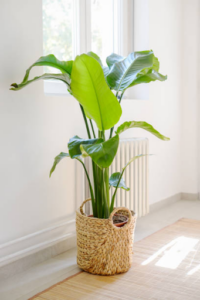
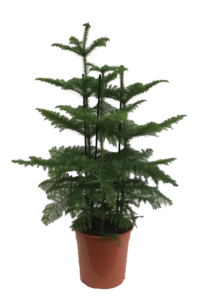
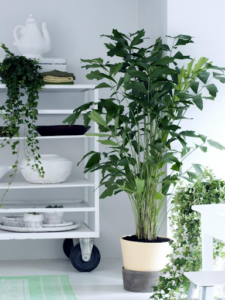
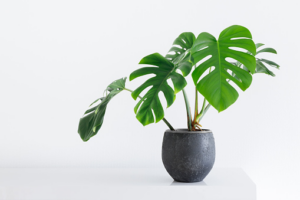
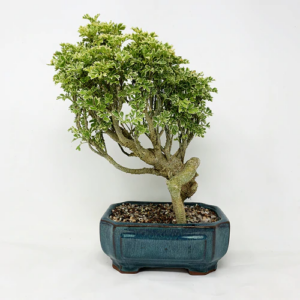
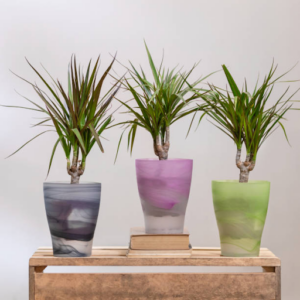















![How to Find Someone’s Tinder Profile? [2024 Expert Guide]](https://review42.com/wp-content/uploads/2023/06/Finding-Someone-on-Tinder.jpg)

